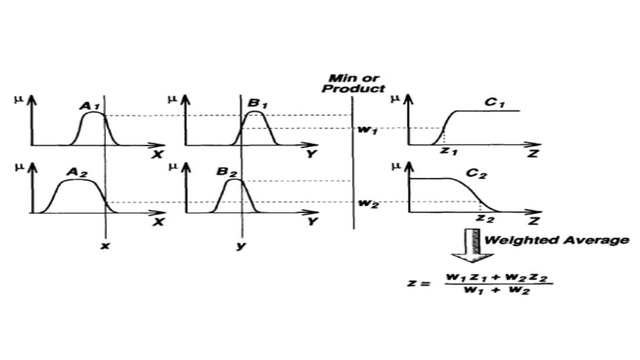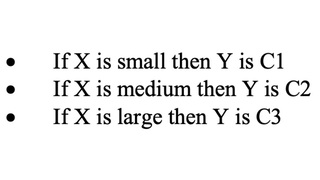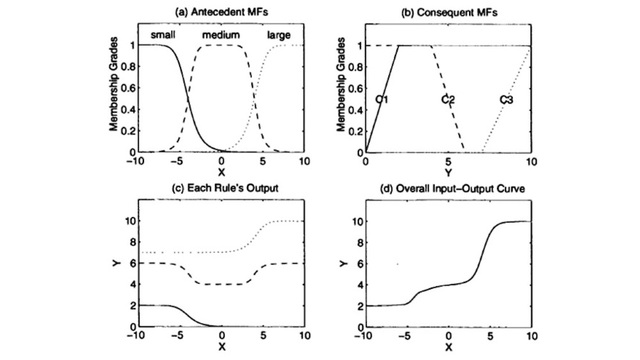Tsukamoto Fuzzy Model
Introduction
In the Tsukamoto fuzzy models, the consequent of each fuzzy if-then rule is represented by a fuzzy set with a monotonical membership function, as shown in Figure 1. As a result, the inferred output of each rule is defined as a crisp value induced by the rule’s firing strength. The overall output is taken as the weighted average of each rule’s output. Figure 1 illustrates the reasoning procedure for a two-input two-rule system.

Since each rule infers a crisp output, the Tsukamoto fuzzy model aggregate each rule’s output by the method of weighted average and thus avoids the time-consuming process of defuzzification. However, the Tsukamoto fuzzy model is not used often since it is not as transparent as either the Mamdani or Sugeno fuzzy models. The following is a single-input example.
Example: Single-input Tsukamoto fuzzy model
An example of a single-input Tsukamoto fuzzy model can be expressed as:

Where the antecedent MFs for “small”, “medium”, and “large” are shown in Figure 2(a), and the consequent MFs for “C1”, “C2”, and “C3” are shown in Figure 2(b). The overall input-output curve, as shown in Figure 2(d), is equal to, where fi is the output of each rule induced by the firing strength Wi and MF for Ci. If we plot each rule’s output fi as a function of x, we obtain Figure 2(c), which is not quite obvious from the original rule base and MF plots.

Since the reasoning mechanism of the Tsukamoto fuzzy model does not follow strictly the compositional rule of inference, the output is always crisp even when the inputs are fuzzy.
References & Resources
- "Neuro-fuzzy and soft computing"
Latest Post
- Dependency injection
- Directives and Pipes
- Data binding
- HTTP Get vs. Post
- Node.js is everywhere
- MongoDB root user
- Combine JavaScript and CSS
- Inline Small JavaScript and CSS
- Minify JavaScript and CSS
- Defer Parsing of JavaScript
- Prefer Async Script Loading
- Components, Bootstrap and DOM
- What is HEAD in git?
- Show the changes in Git.
- What is AngularJS 2?
- Confidence Interval for a Population Mean
- Accuracy vs. Precision
- Sampling Distribution
- Working with the Normal Distribution
- Standardized score - Z score
- Percentile
- Evaluating the Normal Distribution
- What is Nodejs? Advantages and disadvantage?
- How do I debug Nodejs applications?
- Sync directory search using fs.readdirSync